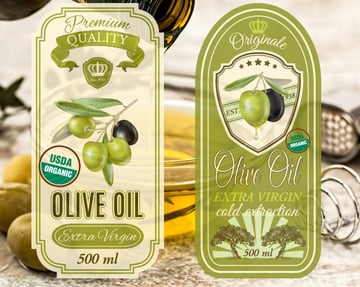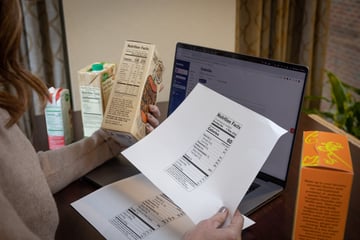Eric Edmunds is a program analyst with the Oregon Department of Agriculture. As a newly appointed food-safety inspector, Eric agreed to give us a little peak behind the curtain of how Oregon performs food inspections. Here is what he had to share with us.
The Inspection Process
Q: Can you sum up what you do?
I started as a law clerk, and managed the rule-making process for food safety, as well as an occasional rule in animal health and plant programs. I then became a program analyst. I continued to manage rule-making proceedings, and began evaluating several of our programs in relation to federal equivalence, as well as how federal rule proposals would affect our programs (Manufactured Food Regulatory Program Standards and Food Safety Modernization Act). I recently began training to perform food safety inspections for the state.
Q: How do you (or how does your agency) decide whom to inspect?
We use a risk-based analysis of food products and the processes used to create them. Low risk situations are contacted at least every three years, medium risk at least every two years, and high risk at least one time per year. These are our goals, but we do not currently have enough staff to always meet them.
Q: Can you list an example of a low, medium and high risk situation?
Low: Any business that sells/produces food that does not need time/temperature control. For example, a convenience store that only sells prepackaged food, a bakery that does not use any perishable toppings/fillings, or a fresh produce stand (no cutting, processing, mixing, etc.)
Medium: Businesses that have ready-to-eat food that needs to be held at appropriate hot and cold temperatures. It would include processing of food products that are meant to be maintained at temperature. Imagine Rojo’s salsa, it is processed, but is transported, and held under refrigeration, with clear labels. Even though there are hazards, temperature abuse is the key indicator.
High: Business that sell food with more intense processing. Sometimes the processing involves temperature control (like for seafood), and sometimes it doesn’t. Low Acid Canned Food and Acidified Food, for example, would typically be considered high risk.
Q: Where are startup businesses placed in the priority?
Our mission:
- Ensure food safety and provide consumer protection
- Protect the natural resource base for present and future generations of farmers and ranchers
- Promote economic development and expand market opportunities for Oregon agricultural products
The three broad policy areas of the mission are interdependent. Without a strong and healthy natural resource base—particularly land and water—there is little or no agricultural production to promote and market. Without assurance that the food produced in Oregon is safe, there is little chance that many agricultural products will be of interest to potential customers.
Can I let that speak for itself a little bit? Food safety is a major priority, but we also promote business development. You can’t have a business if you don’t provide safe food. While new businesses never take priority over necessary food safety inspections, we try to work with, and license new businesses as much as possible. It becomes a part of everyday work. If there is an important food safety concern elsewhere, we would respond to that first.
What Impacts an Inspection?
Q: Do customer comments affect the inspection priority?
Yes and no. We handle huge amounts of complaints from the public. Sometimes they are important, sometimes not as much. For example, animals in food businesses. For the most part, only service animals (assistance animals in Oregon Law) are allowed in food businesses. However, the law around it is confusing and full of perils for businesses. The liability of a ADA claim makes most decide to look the other way, but we have a lot of calls about pets. Other complaints are very real. We take complaints and decide on the best course of action. Sometimes it is a phone call, sometimes it is a note to talk about it at the next inspection, and it can mean that we perform an immediate, unannounced inspection.
Q: What can a business expect from an inspection?
Our inspections are unannounced to create a more realistic view of how businesses operate on a typical day. We typically show up, present our identification and explain why we are there. Preferably, we walk through the business with the manager or person in charge and see if they demonstrate the appropriate knowledge, and to ask any questions about the business. If there are problems, we explain them, then work with the manager/person in charge to resolve any issues. Sometimes they need to be resolved immediately, and sometimes we set a follow up appointment to come back and see if everything is in order.
Q: How do inspections for a restaurant differ from those for processing plants?
Processing plants are regulated by the Code of Federal Regulations (CFR), restaurants are regulated by a retail food code. In Oregon, restaurants and processing plants are regulated through the Oregon Health Authority (OHA), which has its own food code Businesses that have both processing and restaurant sales (such as breweries) are generally regulated by the agency that governs the greatest percentage of sales.
For example: In Salem, Ore., Gilgamesh is a brewery that happens to have a restaurant, so the Oregon Department of Agriculture (ODA) inspects it using the CFR, but The Ram is a restaurant that happens to brew beer, so OHA inspects it.
OHA contracts with counties to perform its inspections. Also, wineries are typically processing plants, but any added tasting rooms or special events will still typically be inspected by ODA.
How Nutrition Labels Fit into an Inspection
Q: Do you also audit any nutrition labeling for fraud?
Not really. We do review labels with processors, but they are liable for any claims. When we do inspections we make sure that items are properly labeled with date marks, allergen warnings, and ingredient lists, but we do not take enforcement action for fraud. If anything, we will have them remove the product from the shelf for relabeling due to safety concerns. Fraud for health claims would typically be enforced by FDA.
Q: Do you inspect both CFR and ODA facilities, or do members of your team specialize in one type of regulation?
Actually we do both. ODA adopts the CFR by reference for processing facilities. (OAR 603-025-0190). That is part of the Manufactured Food Regulatory Program Standards (MFRPS). Oregon was one of the pilot states to create a manufactured program that would be equivalent to FDA. While we are still under the 2010 version of the CFR, there have not been significant changes between now and then. We also regulate under the Pasteurized Milk Ordinance (PMO), National Shellfish Sanitary Program (NSSP), and we have created an ODA Retail Food Code that differs from the OHA Retail Food Code in certain aspects. We also have laws that are unique to Oregon, such as: Farm Direct Marketer Exemptions, Custom Meat Slaughter Facilities, Poultry Slaughter Exemptions, and Domestic Kitchens.
Tag(s):
Industry Regulations
Other posts you might be interested in
View All Posts
44 min read
| June 24, 2020
Cannabis Edibles Product Packaging and Compliant Labeling in Oregon
Read More
Food Labeling
41 min read
| April 2, 2018
Organic Labeling Requirements
Read More
Food Labeling
17 min read
| April 19, 2023

